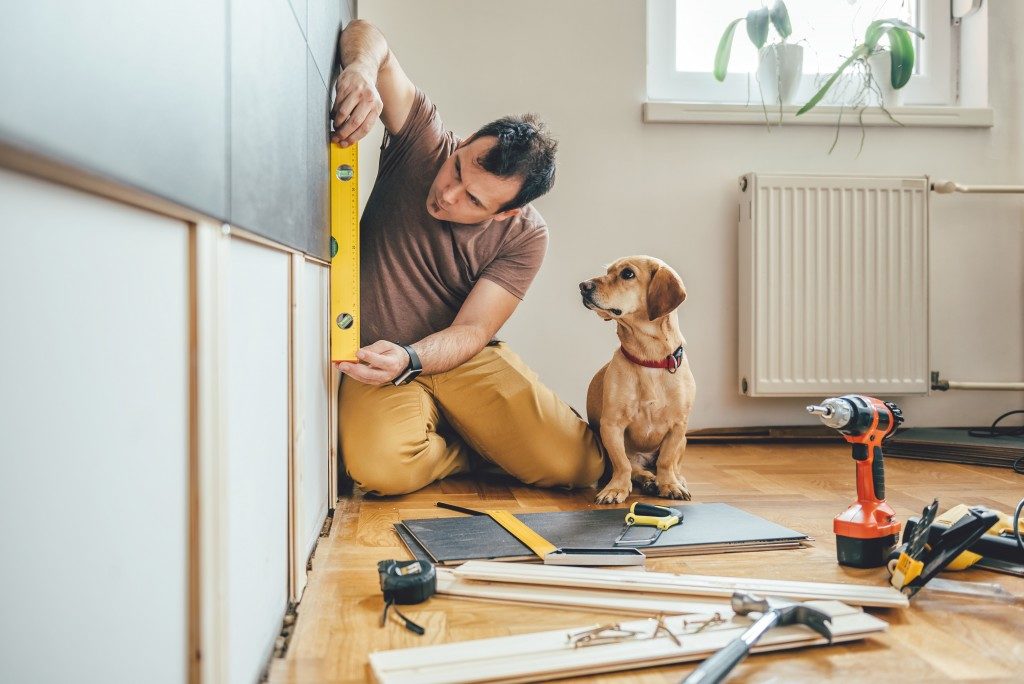- Buying an existing home can be cheaper and you may already get updated amenities, but there is limited ability to customize it to your specifications.
- Building your own home allows for ultimate customization and control, however construction delays and unexpected costs are expected.
- Financing a new home requires special loans with different interest rates and repayment terms compared to a traditional mortgage.
- Consider buyer competition in the housing market, as well as rising costs of materials, when making your decision.
When it comes to owning a home, you have two options—buying an existing home or building your own. Both have advantages and disadvantages, so it’s essential to consider all the factors before making your decision. Let’s explore both options so you can make an informed decision about what is best for you.
Buying an Existing Home
The main benefit of buying an existing home is that it can be cheaper than building one from scratch. This is especially true if you find a home in a desirable location that is priced below market value.
Additionally, if you purchase a home in a neighborhood with older homes, they may already be updated with modern amenities such as granite countertops and stainless steel appliances. And since the house has already been built, there are no construction delays or unexpected costs associated with building a new home.
Home Warranties and Other Perks
Buying a brand new home comes with its financial perks. Many builders offer incentives such as free upgrades and zero-interest financing options, so it’s important to ask about any special offers before deciding. Some builders offer free upgrades or complimentary upgrades with the purchase of a new home. These can range from high-end appliances to custom landscaping, depending on the builder and location in which the home is being purchased.
Many new homes also come with warranties that can provide coverage for items such as appliances and other components in case of a defect or failure. Some examples of home warranties are:
- American Home Shield Home Warranty– this provides coverage for up to 20 major home appliances, systems, and components, including air conditioning units, washing machines, refrigerators, and more. This warranty offers optional coverage for pools and spas, septic systems, well pumps, and home generators.
- 2-10 Home Buyers Warranty– this provides coverage for up to 10 major systems and components in the home, including heating, electrical, and plumbing systems. This warranty offers optional coverage for pools and spas, septic systems, well pumps, and home generators.
Other Considerations
On the downside, buying an existing home means you will likely need to make some updates and repairs right away to bring it up to code or make it more comfortable for your family. You may also need to update certain features, such as plumbing, electrical wiring, and air conditioning systems to meet current standards. In addition, choosing an existing home limits your ability to design the exact layout and features that suit your lifestyle needs best.

Building Your Own Home
Building your own home allows for ultimate customization and control over design choices like flooring, fixtures, cabinetry, and even landscaping options outside the house. It also means being able to choose materials like stone counter tops instead of laminate ones, which may cost more upfront but last longer in the long run. In addition, having a custom-built house means that all building codes and safety regulations are met from day one since you will have oversight over every aspect of its construction process.
There are also house and land packages available that may be a good option for those who want to purchase land and then build their own home. You can buy the land and start the construction, but there will still be less risk than building from scratch because some groundwork has already been done.
Financing a New Home
Building a home is a dream for many, but only some have the finances to do so. To cover the expenses, some will need a construction loan, a short-term loan specifically designed to cover the cost of building a new home. This type of loan has different interest rates and repayment terms than a traditional mortgage, so it’s essential to understand what is included in the loan before signing on the dotted line.
In addition, some states may offer tax credits or other incentives for those who undertake a new construction project. It’s important to research any incentives available in your state to ensure you’re not missing out on potential savings.
Other Considerations
A downside of building your own home is that additional costs will be associated with the process, including architectural fees, permits, and potential problems caused by unforeseen circumstances during construction (such as bad weather).
Building can also take significantly longer than purchasing a ready-made house — sometimes up to two years, depending on how complicated your plans are — which makes this option less suitable for people who want/need an immediate move-in date.

Factors to Consider Before Deciding
When it comes to owning a home, deciding between buying an existing one or building your own can be difficult. Aside from the factors mentioned above, there are other considerations you need to consider before making a choice.
Buyer Competition
Buyer competition is when lots of people want to buy the same house. When there are not enough houses, it can mean that buyers have to compete with each other to buy a house. This can cause prices to go up because more people are trying to buy the same house.
The buyer competition in the housing market is expected to be particularly fierce due to an ongoing pandemic and a limited number of available homes. According to the National Association of Realtors, existing home sales declined 28.4% last October 2022 from the previous year. In addition, new home construction has been slow to rebound since the start of the pandemic, leaving buyers with fewer options in a competitive market.
Cost of Materials
The cost of construction materials has been increasing significantly over the last few years, and many analysts predict that this trend will continue in 2022. The rising costs are due to a combination of factors, including increased demand for construction materials, scarcity of resources, and rising labor costs. In fact, in 2021, the average cost of construction materials rose by more than 9%. This can significantly impact the cost of building your own home, so it’s essential to factor in these costs when making a decision.
Ultimately, buying or building a home comes down to finances and lifestyle needs. Buying an existing property can be cheaper and faster but offers less control over design choices. Building your own home is more expensive and takes longer to complete, but it gives you greater flexibility when customizing the space for your specific needs.
Consider all factors before making this critical life-changing decision, as many considerations are involved in buying and building a new house. Make sure you research to make an informed decision that best suits your current financial situation and future goals.


